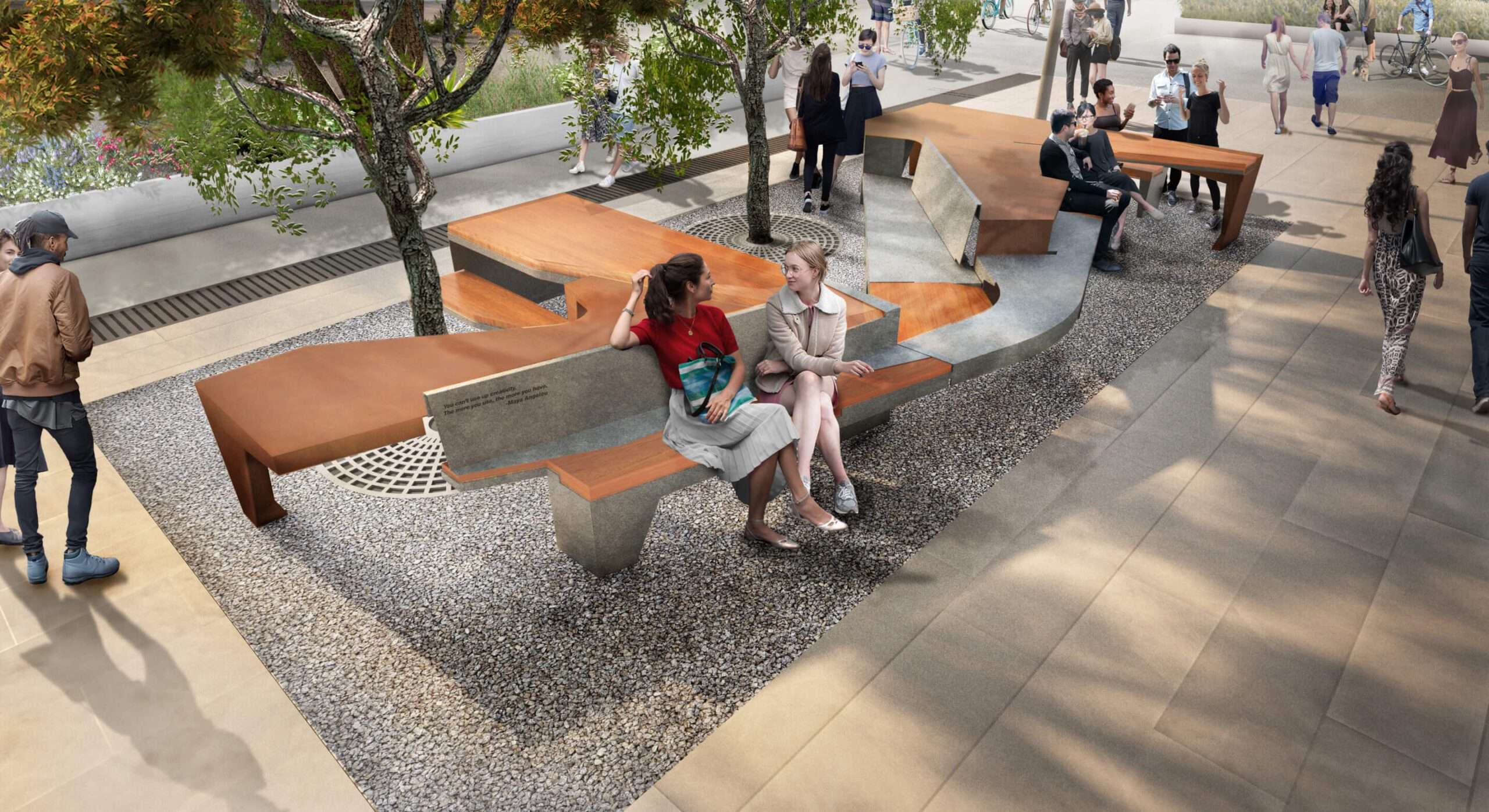Converting the former Berkeley Museum of Art into a Life Sciences Laboratory
Alameda-based architecture and design firm MBH Architects has transformed the former Berkeley Museum of Art and the Pacific Film Archive.
Designed by Mario Ciampi, it will be transferred to a new life sciences laboratory on the campus of the University of California, Berkeley.
Design Features
The structure of the Bakar BioEnginuity Hub, the brutal original structure of 1970,
has been redesigned as a new science laboratory by preserving the structure’s elements of historical interest.
The original structure of the building consisted of massive concrete volumes, intertwined with each other,
and placed in a sequential manner.
The studio has converted a non-operable, structurally flawed space into a state-of-the-art combined life
science laboratory facility designed to LEED Gold standards.
Thus the new design, including the addition of a glass facade and two new public plazas,
redesigns and modernizes the former Berkeley Museum of Art and the Pacific Film Archive.
By today’s standards while maintaining the building’s original Brutalist design approach,
the museum was evacuated in 2014, as it was found to be seismically unsafe.
At a later stage, MBH Architects was initially commissioned to conduct a feasibility study to work on the necessary renovations,
to make the building perfectly suitable for life science laboratories, while maintaining the historical significance of the structure.
As the studio explained, during this phase, MBH identified four major challenges to revamping the structure to meet the demands of the life sciences.
A structural upgrade of the structure’s performance was also required based on the existing code,
and adapting the life sciences and co-working program to the building’s irregular geometry was another major challenge in the design process.
While addressing life safety, a major mechanical upgrade is another component,
the final touch being to deliver a successful performance on all necessary renovations and upgrades while maintaining the historic character of the building.
Upon completion, the initiative was feasible, with MBH co-designing the highly anticipated Bakar BioEnginuity Hub.

Building contents
The building program includes a laboratory, open offices, collaboration spaces, private offices,
conference rooms, an auditorium, also space for a bachelor’s program, terraces, as well as outdoor public spaces.
The MBH team has also converted the upper level galleries of the former museum into laboratories,
with glass fronts overlooking cantilevered cliffs suspended within a sky-lit double height space.
These ramps and other parts of the museum’s circulation system that led visitors from one gallery to another have been preserved.
It has been redesigned to create deliberate interaction between groups of people,
who may not have a chance to speak, furthering the university’s goal of encouraging innovation among scholars.
The design team also wanted to challenge the often sterile design of lab spaces and bring the labs to life.
Using brightly colored walls and natural light, by revealing skylights that have been covered,
they are replaced to protect artworks from UV damage.
Converting the former Berkeley Museum of Art into a Life Sciences Laboratory
The materials for the workspaces and common areas were also chosen to create contrast,
complement the original structure and provide a welcoming environment for innovative work.
The studio has carefully upgraded the historically significant elements of the 1970’s brutalist structure to preserve the original character while protecting the building from future damage.

Important issues, such as seismic performance, water intrusion,
and acoustic performance, were addressed as the building was lifted to code.
While the team also renovated the mechanical, electrical and plumbing infrastructure,
including replacing the existing gas service with all-electric systems.
This allows the project to achieve low EUI, operational carbon neutrality,
Net-Zero HVAC water use as well as meet LEED Gold requirements.
The lighting elements are also designed to honor the art museum’s original lighting design,
as it highlights the building’s distinctive features.
It meets the diverse lighting requirements for a variety of spaces used throughout the building,
and is aesthetically coherent throughout the building.
For more architectural news







